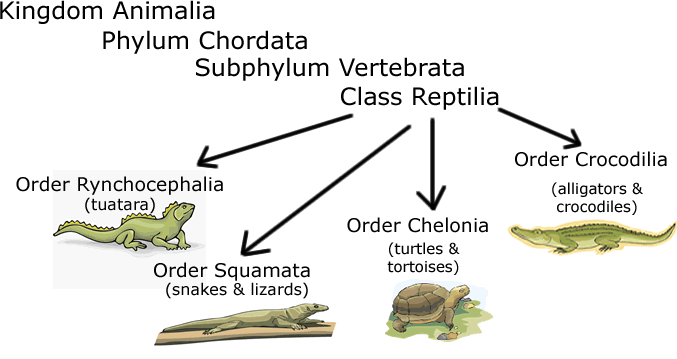Reptiles - Form, Function, and Taxonomy

Kingdom Animalia
---Phylum Chordata
------Subphylum Vertebrata
---------Class Reptilia
Characteristics of Reptiles
1. Strong, bony skeletons and feet with claws
2. Ectothermic (cold-blooded)
3. Dry scaley skin
4. Amniote eggs
5. Respiration with lungs
6. Ventricle partially divided
7. Internal fertilization
The Amniote Egg
Contains a water and food supply for the developing embryo and can be layed on land.
Must be fertilized internally, has a shell

| Structure | Function |
| amnion | provides a watery environment for the embryo |
| yolk Sac | contains the food for the embryo |
| allantois | stores waste |
| chorion | allows oxygen to enter and carbon dioxide to leave |
| albumin | egg white |
Oviparous - eggs are laid and
incubated outside the body
Ovoviviparous - eggs are incubated inside the body, born live
Viviparous - live birth, no egg (humans)
Types of Reptiles

Resources Related to Reptiles
Animal Reproduction and the Amniote Egg - color the amniote egg and identify the main structures; compare to human reproduction
Snake Detection Hypothesis (CER) - examine a possible evolutionary cause for fear of snakes
